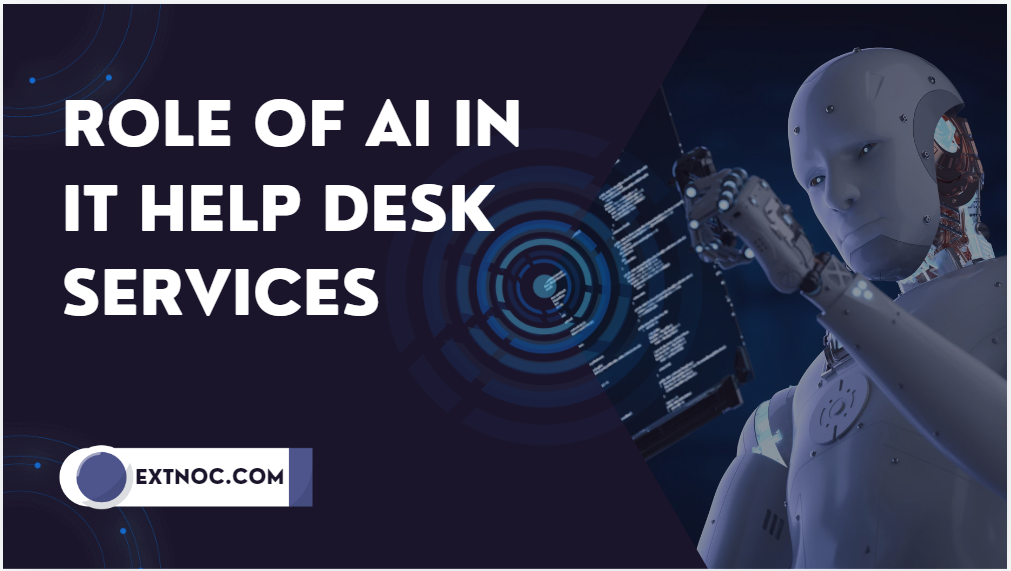As businesses become increasingly reliant on technology, the demand for efficient IT support services has never been higher. Among the advancements driving transformation in the IT help desk sector is artificial intelligence (AI). AI is revolutionizing how companies deliver help desk services, making them faster, smarter, and more personalized. In this article, we’ll explore how AI is changing IT help desks and why it’s essential for organizations seeking to improve their customer service and operational efficiency.
Streamlining Issue Resolution with AI
One of the most significant advantages of using AI in IT help desk services is its ability to streamline issue resolution. Traditionally, help desks have relied on human agents to handle support tickets, which often led to longer wait times and backlogs during peak periods. However, with AI-powered automation, companies can now automate repetitive tasks such as password resets, system diagnostics, and basic troubleshooting.
AI-driven systems use machine learning algorithms to analyze and categorize incoming support requests. This helps the help desk route more complex issues to the appropriate technical experts while handling simpler tasks independently. This not only speeds up resolution times but also improves the overall productivity of IT staff.
Enhancing Customer Experience
Customer experience is at the heart of any successful help desk operation, and AI plays a pivotal role in enhancing this experience. AI chatbots, for instance, are increasingly being deployed to provide instant responses to customer queries, 24/7. Unlike human agents, chatbots can handle multiple interactions simultaneously, providing users with immediate assistance without long wait times.
Moreover, these AI-powered virtual assistants can gather essential data about the customer’s issue before involving a human agent, if necessary. This reduces the time spent on manual data collection and allows agents to jump straight into solving the problem. As a result, customers experience shorter wait times and receive more accurate and tailored solutions to their issues.
Predictive Analytics for Proactive Support
AI also empowers IT help desks by enabling predictive analytics, which shifts support from a reactive to a proactive approach. With AI, IT teams can monitor systems in real-time, identifying potential issues before they escalate into major problems. For instance, AI algorithms can analyze system logs to detect unusual patterns that might indicate impending hardware failures or software bugs.
This proactive approach helps companies address issues before they impact operations, ultimately reducing downtime and minimizing disruptions for users. Furthermore, AI-driven predictive analytics can inform decision-making by providing insights into user behavior, peak usage times, and recurring technical problems, helping businesses plan and allocate resources more effectively.
Reducing Operational Costs
Another critical benefit of incorporating AI into IT help desks is the potential for cost savings. By automating routine tasks, AI reduces the need for large teams of support staff to handle basic queries and troubleshooting. This allows organizations to allocate their human resources more efficiently, focusing on high-priority and complex technical issues.
Additionally, AI helps reduce operational costs by minimizing downtime and improving system reliability. As AI-driven tools monitor and diagnose potential issues in real time, businesses can prevent costly system outages and ensure continuous operation.
AI and Data Security
While AI offers several benefits for IT help desks, it also raises concerns around data security and privacy. Help desks often handle sensitive customer information, and ensuring the protection of this data is paramount. AI-powered systems must be configured to comply with industry security standards and data protection regulations.
That said, AI can actually enhance data security by identifying potential cybersecurity threats in real-time. AI algorithms can detect unusual activity within a system, such as unauthorized access attempts, phishing attacks, or malware infections, allowing IT teams to respond more quickly and mitigate risks.
Challenges of Implementing AI in IT Help Desks
Despite the numerous benefits of AI, implementing it in an IT help desk environment comes with its own set of challenges. One of the main challenges is ensuring that AI systems are correctly integrated into existing IT infrastructure. Poor integration can lead to inefficiencies, data silos, and potential disruptions in service.
Moreover, businesses must ensure that their staff is adequately trained to work with AI-powered tools. While AI can automate many tasks, human oversight is still necessary to manage and fine-tune these systems. Therefore, investing in training and development is crucial to ensure a smooth transition.
Moreover, businesses must ensure that their staff is adequately trained to work with AI-powered tools. While AI can automate many tasks, human oversight is still necessary to manage and fine-tune these systems. Therefore, investing in training and development is crucial to ensure a smooth transition.
Conclusion
The role of AI in IT help desk services is transformative, offering improvements in efficiency, customer experience, cost savings, and proactive support. As businesses continue to embrace AI-driven solutions, it’s essential to stay informed about the Features of Help Desk Automation to ensure that your organization is fully leveraging the potential of these technologies. Whether you are streamlining workflows or enhancing customer interactions, AI is reshaping the landscape of IT help desks, driving innovation, and pushing the boundaries of what’s possible in customer support.


